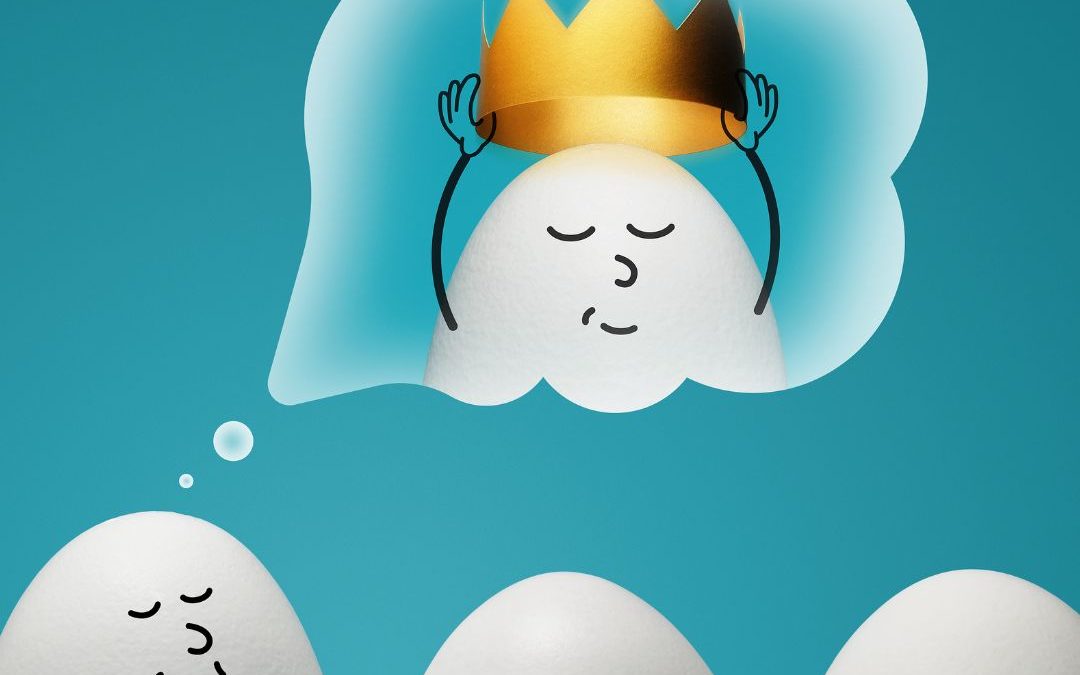
What is narcissism
What is the difference between having a narcissistic personality disorder and having narcissistic personality traits?
According to Dr. Ramani Durvasula, clinical psychologist and leading expert on all matters – narcissism, it has only been in the last 15 years that the term narcissism has been bantered around in our common vernacular. In my practice, both as a certified coach and a registered psychotherapist, I’ve come across the term more in the last year than I can recall in the last decade.
What Greek Mythology Tells Us
Now, I want to take a moment to go back in time…way back, in fact, to classic Greek mythology. The word, narcissism, comes from the ancient Greek myth of the hunter, Narcissus, who was the son of the river god Cephissus and the nymph Liriope. In both Ovid’s and Pausanias’ versions of Narcissus, he was said to be exceptionally beautiful.
One day, a forest nymph named Echo saw Narcissus and fell in love with him, but he rejected Echo’s affections. She was devastated. As a result, the goddess of revenge, Nemesis, tricked Narcissus to come to a pool of water where he looked at his own reflection and fell in love with himself. In his realization that his love could not be reciprocated, he could focus on nothing but his own reflection. He stopped eating, drinking, and sleeping and died alone, without love.
What is the moral of the story? It isn’t healthy to be self-absorbed or lack empathy for others.
Fast-forwarding through history now to the late 19th century, it was the English physician, Havelock Ellis, who first labelled narcissism as a mental disorder. I would be remiss if I didn’t mention Sigmund Freud’s take on narcissism. He believed that it was a normal part of a child’s development but could become a mental disorder if it lasted into adulthood.
But are we using the term or label correctly? Let’s set the record straight.
What is Narcissistic Personality Disorder (NPD)?
According to the Diagnostic and Statistical Manual of Mental Disorders (DSM -5), NPD is a mental health condition characterized by the following patterns:
A pervasive pattern of grandiosity (fantasy or behaviour), need for admiration, and with lack of empathy, beginning by early adulthood, as indicated by at least five of the following:
- Has a grandiose sense of self-importance (e.g., exaggerates achievements, expects to be recognized as superior without actually completing the achievements)
- Is preoccupied with fantasies of success, power, brilliance, beauty, or perfect love.
- Believes that they are “special” and can only be understood by or should only associate with other special people (or institutions).
- Requires excessive admiration.
- Has a sense of entitlement, such as an unreasonable expectation of favorable treatment or compliance with his or her expectations).
- Is exploitative and takes advantage of others to achieve their own ends.
- Lacks empathy and is unwilling to identify with the needs of others.
- Is often envious of others or believes that others are envious of them.
- Shows arrogant, haughty behaviours and attitudes (NCBI, n.d.)
Want to Take the Test?
There is a long and short form version of an assessment to evaluate NPD. I’ve included a link to the short version here.
While I can’t imagine a situation where someone might ask a friend, colleague, boss, or family member to complete it without fear of damaging the relationship, I think it might be helpful to review the questions in the assessment to get a sense for what is included.
To be diagnosed with NPD, the individual needs to exhibit at least five of the nine patterns which are listed above.
The challenge is that an individual with NPD is usually dealing with other issues such as depression, anxiety, or substance abuse, so it makes it more difficult to get to the heart of the matter with NPD. As per the findings in the NCBI report (n.d.), individuals with NPD often experience conflicts with others.
According to the Cleveland Clinic (n.d.) many individuals hide their narcissistic behaviours and we’ll see more about this as we explore two core types of narcissism – grandiose (overt) and vulnerable (covert).
Grandiose versus Vulnerable Narcissism
There are two types of NPD – the more overt or exhibitionist who says, “look at me – I’m the greatest’ or as per Dr. Ramani Durvasula’s book title “Don’t You Know Who I am?” while the other type is more covert and, from this lens, narcissism comes with a view of the world from a victim mentality. However, both types tend to crave respect and veneration from others.
Grandiose narcissists may be easier to spot in that they appear to be dominant, extroverted, and arrogant. They seem confident about their lives. With grandiose narcissists, they are charming and outgoing in social situations. They seek social status and may appear quite likeable early on in a relationship and then over time, their sense of entitlement and antagonistic ways surface.
With vulnerable narcissists, they tend to be hypersensitive, insecure, anxious, depressed, and have low self-esteem. They seek social inclusion and wish to minimize failure in their life and therefore, tend to be more defensive in order to avoid being seen as the one at fault.
Suggested Reading
“Don’t You Know Who I Am?”: How to Stay Sane in an Era of Narcissism, Entitlement, and Incivility, by Dr. Ramani S. Durvasula
Suggested Viewing (approx. viewing time 1 hr, 13 minutes)
What about Narcissistic Personality Traits?
Time to come full circle here. As with many mental health disorders, there is a spectrum or continuum that needs to be considered. Narcissism falls into this category as well.
As you’re reading this, I imagine you might be thinking of people in your life who may exhibit some narcissistic tendencies. At some period in our lives, we all exhibit narcissistic tendencies. It might be caused by a trauma response, or a culmination of factors that require an acute need for self-preservation that shows up as a lack of concern for others. A person can appear to be self-centered and have a big ego, but it doesn’t mean they are a true narcissist. They may be unaware of what they are doing and the harm they are causing, because of a lack of self-awareness and the inability to effectively solicit important feedback.
Having narcissistic tendencies does not make a person a narcissist. For someone to have NPD they need to exhibit at least five of the nine patterns listed in the DSM-5. In summary, they need to lack empathy, disregard others, and not understand the effect their actions have on those around them. Living with NPD isn’t a choice. It may be caused by factors specific to childhood developmental trauma such as emotional or physical abuse. Research studies also reveal that those with NPD have subtle differences in the brain structure and that it may be genetic in nature (Cleveland Clinic, n.d.).
How to Protect Yourself
In the last decade, so much has already been written on this subject, but I thought it wise to share a few tips for your quick reference here. Ultimately, you can’t change someone with NPD, but you can encourage them to seek professional support and care.
Don’t take things personally – someone with NPD may be looking for a reaction and it is helpful to keep calm and not to respond in kind. In this situation, you can’t fight fire with fire.
Maintain Your Boundaries – it is important to set and communicate healthy boundaries as someone with NPD may frequently try to cross them without considering the implications to you. Giving in may only exacerbate the situation.
Watch for signs of Gaslighting – here you need to protect yourself by journaling and keeping notes. It is not about being paranoid, but rather keeping track of what was said as a point of reference and to help you restate your boundaries and any attempts to have them crossed.
What is Gaslighting?
As per Kukreja & Pandey (2023), gaslighting is a set of attempts to create a surreal social environment by making the other in a relationship feel crazy or behaviour where a person tries to influence another by having them doubt the validity of their own judgement.
Suggested Reading
How to detect and protect yourself from emotional vampires
Ultimately, it comes down to how you feel about the person and what your experience is like when you’re with them. If you’re in a relationship or working with someone who has NPD, it can put you under severe emotional and physical strain.
It can feel quite scary being in a friendship, intimate or work relationship with someone who you believe has NDP or exhibits several narcissistic personality traits. Remember to practice self-care and seek your own professional mental health support to ensure you’re getting the care you need to deal with relationship complexities associated with NPD.
References
Cleveland Clinic. (n.d.). Turning your attention to narcissistic personality disorder. Cleveland Clinic. https://my.clevelandclinic.org/health/diseases/9742-narcissistic-personality-disorder#:~:text=The%20exact%20cause%20of%20NPD,with%20parents%2C%20friends%20and%20relatives
Kukreja, P., & Pandey, J. (2023). Workplace gaslighting: Conceptualization, development, and validation of a scale. Frontiers in psychology, 14, 1099485. https://doi.org/10.3389/fpsyg.2023.1099485
NCBI. (n.d.). Narcissistic personality disorder – statpearls – NCBI bookshelf. Narcissistic personality disorder. https://www.ncbi.nlm.nih.gov/books/NBK556001/
The 3 signs you’re dealing with a narcissist & how to set boundaries!: Dr. Ramani & Jay Shetty. YouTube. (2022, December 12). https://youtu.be/z4z93S8ri4U



